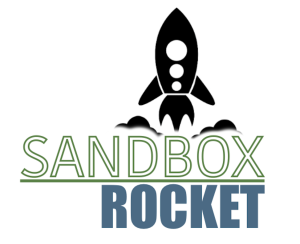The Final Frontier: Crossing the Web 2.5 to Web 3 frontier”. This was the title of Serge Var’s a recent talk at the 2022 Web 3.0 Conference in January. It is clear web3 has a bright future.

Serge presented arguments that despite numerous projects calling themselves “Web 3.0” and “decentralized”, we are not quite there yet: we’re still relying too heavily on centralized systems, using centralized domains that can be taken away by governments or hijacked, untrusted centralized storage where the UI is stored, and browser extensions that can disappear tomorrow at Google’s whim.
The only decentralized part of a typical “decentralized application” turns out to be the smart contract, with everything else open to being compromised.
Such Frankenstein’s monsters crossbred from Web2 and Web3 parts (what many nicknamed Web 2.5) lead not only to multiple security fiascos, such as BadgerDAO recently losing $120M of participants’ funds because of a centralized UI that had been hijacked, but also gives a premature bad rap to the Web 3.0 concept itself, when people are confused about how their NFTs on the supposedly censorship-resistant and decentralized internet can get censored on OpenSea and then disappear from their Metamask wallet.
A New Paradigm
After months of intensive research and development, the team at Point Labs came up with an architecture that allows for complete decentralization of the tech stack, and christened it Point Network. For the first time, instead of attempts to shoehorn blockchain into the Web2 paradigm, there is a completely separate network that can finally be called Web3.
The way it works is by leveraging a combination of several decentralized technologies, replacing the vulnerable components of the old internet: decentralized browser (just like you would use Tor Browser to access Deep Web, you use Point Browser to access true Web3), decentralized domains living on the blockchain, and decentralized storage (Point Labs partnered up with Arweave and uses their network for the decentralized storage component).
“What’s the Point?”
All decentralized applications that you know and love can easily be deployed on Point Network, and at first sight, they look and feel exactly the same: just instead of uniswap.org, you would access uniswap.point, and instead of Metamask or Phantom, a Point confirmation window would pop up (Point mimics their APIs so that deployments can be as easy as possible).
However, under the hood, the apps are now completely decentralized: the UI, the smart contracts, the domains, the identities are all finally living on the blockchain, which makes dApps completely censorship-resistant and publicly auditable. The fact that each update to a website is transaction on a blockchain provides for intriguing use-cases, one of them being multisig domains (where an update to a website has to be signed off by several developers, so that an attacker would have to compromise all of them, which would be a much harder task).
Point Network also features several demo dApps of its own: Point Social (a web3 social network), Point Mail (end-to-end encrypted mail), a multi-chain Point Wallet, and so on.
“When Web3?”
Point Network is still at an early stage of development, but already shows promise to potentially become the main web3 standard in the near future.
Point Labs has released a public alpha version in October last year for the Solana Ignition hackathon, where they ended up on the Judges Honorary List of projects, after which they have raised several VC rounds from firms including, among others, Sino Global Capital, Arweave, Solar Eco Fund, Zoomer Fund, Definitive and Chorus One.
Now their goal is leveraging their rapidly expanding team of engineers to release the beta version and launch in mid-2022 (which is just a few months away), making web 3.0 accessible to everybody.
Web 3.0 is obviously here to stay, and it’s going to be as big of a deal as was the birth of the internet. The sooner you familiarize yourself with this exploding field, the better you will be positioned to become a valuable part of it. You can learn more about Point Network’s role in it by joining conversations in their growing community of early adopters on Telegram: https://t.me/pointnetworkchat, or on their website https://pointnetwork.io/

